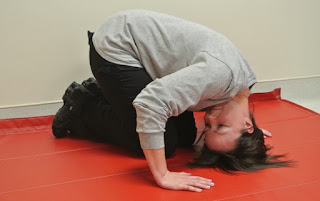All about to define vertigo
It is the most common type of vertigo, the feeling that one
is spinning or that everything is spinning. It can happen when one moves the
head in a certain position. Postural vertigo; benign paroxysmal postural
vertigo; VPPB; Postural dizziness and tell www.remedymyvertigo.com/home-remedies-for-benign-paroxysmal-positional-vertigo/ .
Benign postural vertigo is also called benign paroxysmal
postural vertigo (BPPV) and is caused by a problem in the inner ear.
The inner ear has tubes filled with fluid called
semicircular canals. When one moves, the liquid moves inside these tubes. The
channels are very sensitive to any movement of the liquid. The sensation of
movement of the fluid in the tube tells the brain the position of the body.
This helps to maintain balance.
Benign postural vertigo manifests when a small piece of
calcium similar to bone is detached and floats inside the tube. This sends
confusing messages to the brain about the position of the body.
This vertigo has no major risk factors. However, the risk of
presenting it may increase if you have:
·
Family members who suffer from it.
·
You have had a previous head injury (even a
light blow to the head).
·
You have had an infection in the inner ear
called labyrinthitis.
Treatment
The cause of any brain disorder that causes vertigo should
be identified and treated as much as possible.
To help resolve the symptoms of benign postural vertigo, the
care provider can perform the Epley maneuver. This involves placing the head in
different positions to help restore the organ of balance. You may be prescribed
medications to treat the symptoms of peripheral vertigo, such as nausea and
vomiting. Physical therapy can help improve balance problems. They will teach
you exercises to restore your sense of balance.
·
To prevent worsening of symptoms during a
vertigo episode, try the following:
·
Hold still. Sit or lie down when symptoms occur.
·
Resume activity gradually.
·
Avoid sudden changes in position.
·
Do not try to read when symptoms occur.
·
Avoid bright lights.
You may need walking aid when symptoms occur. Avoid risky
activities such as driving, operating heavy machinery and climbing up to 1 week
after the symptoms have disappeared. Other treatments depend on the cause of
the vertigo. Surgery may be suggested in some cases.

Comments
Post a Comment